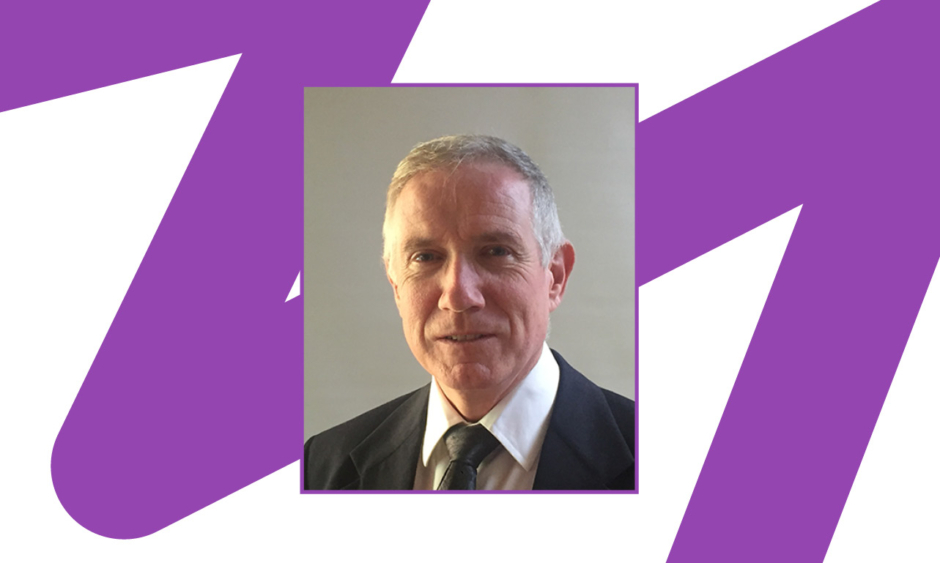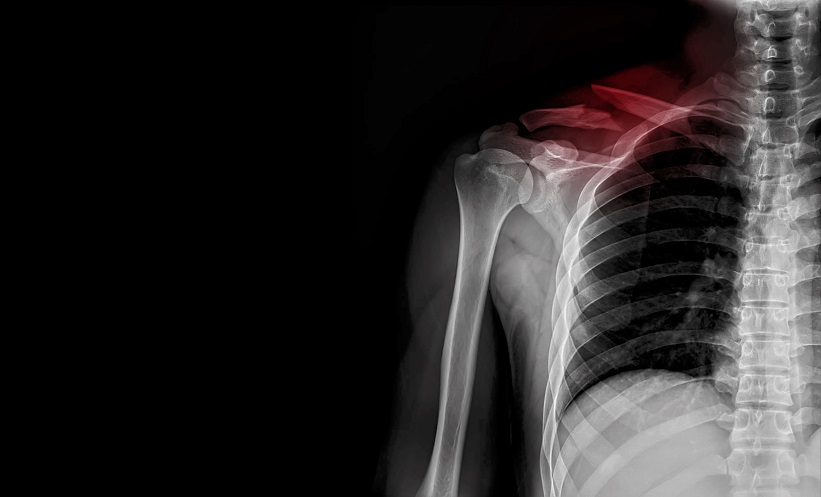Adrian Brady | European Society of Radiology (ESR) President; Mercy University Hospital, Cork, Republic of Ireland; Clinical Professor of Radiology, University College Cork, Republic of Ireland
Citation: EMJ Radiol. 2023;4[1]:46-50. DOI/10.33590/emjradiol/10302409. https://doi.org/10.33590/emjradiol/10302409.
![]()
You attended medical school in Dublin, Ireland, before training as a staff radiologist in Canada. Do you feel that travelling was an integral part of you making it to where you are today?
Absolutely! In the Irish Healthcare System, people usually do a few general years of training after their medical school graduation in Ireland, and then do a number of years of further training in a specialty, equivalent to a North American residency. This is what I did in Dublin. After I completed my fellowship training in Ireland and passed the Fellowship exams, I moved to Canada. It is typical for people who aspire to consultant posts in Ireland to spend a number of years working abroad, and it is encouraged by training bodies. As someone who has headed up a postgraduate training body in the past, I am acutely aware of how valuable international experience is to our healthcare system. For decades, we have very successfully populated our system with people with high-level training at the cutting edge in other countries, possibly with tools or access to facilities that might not have been available at home. This has kept the standard of Irish consultants extraordinarily high.
For me, I enjoyed living and working in Canada. I found it a very congenial and welcoming place to live and work, and my wife and I retain close ties with the country. I found their healthcare system quite different in its structure to the Irish system, and that in itself was valuable, because it is always good to see how someone else does something. I think working and training abroad broadens your horizons, which is why I would encourage young radiologists and other young doctors to do it.
Your previously held the role of Chair of the European Society of Radiology (ESR) Quality, Safety, and Standards Committee (QSSC) before your current role as ESR President. Could you tell us a little bit about your previous role, and how working within that society led you to where you are today?
The QSSC is a very wide umbrella that encompasses a variety of subcommittees and activities in different areas, making it an interesting committee to chair. It was really fascinating for me as somebody who had been very familiar with the ESR, but had not previously been directly involved in the leadership. It gave me a way of understanding the breadth of the activities that the ESR undertakes, and the range of things that are going on, much of which I had not known about until I took on that role. The leadership roles in the ESR are elective, so every year vacant committee chairs go up for election among the membership. After 3 years as QSSC Chair, I ran for election as 2nd Vice President, and was successful in that.
When you are a Committee Chair and on the Executive Council, you are exposed to the wide range of activities, and get a sense of how the society works. I think the ESR has been very successful in leadership in a lot of the areas that are covered by the QSSC. For example, we have done a number of position papers on ultrasound training and ultrasound standards that are really helpful and important. The Ultrasound Subcommittee very successfully produced a white paper defining how ultrasound should be done, promoting standards. Radiation protection is a hugely important aspect of any radiologist’s life. We had a Radiation Protection Subcommittee that set a number of standards, and produced a lot of white papers and position papers. That has now been merged with our EuroSafe Imaging Initiative, which is our broader radiation protection initiative, and has been running for 10 years now.
eHealth and informatics have become increasingly important as artificial intelligence has developed and become more common in radiology. This subcommittee has produced a number of very useful position papers and standards under the artificial intelligence umbrella. The Audit and Standards Subcommittee has been very active in promoting clinical audit across Europe. The fifth subcommittee, Referral Guidelines, is the one that deals with clinical decision support. It has been very useful to strengthen our clinical decision support software and our standards of how reports should be generated, and how clinicians should be guided to utilising the appropriate investigation for a given clinical scenario.
All of these subcommittees sit under QSSC; they have all been doing a large amount of work over the years, much of which is not always immediately realised by the membership, but which has been very instrumental in improving the standard of what we do. I found the 3 years leading that committee valuable in terms of learning what was going on, and in terms of my assisting the subcommittees in getting the message out there, and getting their work programs carried through to success.
As discussed, you have held many roles in radiological societies. Can you talk about the value you feel these societies provide, both for clinicians and patients themselves?
For 11 years, I was a member of the board of the Faculty of Radiologists of The Royal College of Surgeons in Ireland, which functions in two ways. It is the National Society for Radiology in Ireland, and it is also the body that runs and sets the standards for, and manages all specialty training in radiology and radiation oncology. In many countries, the national societies are representative societies, and training is separate from that; however, our faculty has a very central role in actually running the residency training programmes as well.
Towards the end of my time, I served 2 years as the Faculty Dean, the equivalent of president of the society. I found this very fulfilling, and it helped me get to know how things happen on a national level, and how those national practices and standards compare to what goes on elsewhere. It also gave me a lot of good experience in terms of running structures within an individual country. After finishing my term with the faculty, I became quite involved in the European Diploma in Radiology, which is run by the European Board of Radiology. I was a participant as the European Diploma Exam developed, expanded, and changed its structures to accommodate the need to deliver on multiple sites with larger numbers. I suppose that led to my interest in becoming involved directly in ESR leadership.
So, how do these things help patients and clinicians? I am going to answer this in the context of how this benefits practitioners, doctors who practice in different medical specialties. I think having a strong specialty society within a country, or supranationally, such as the ESR, is vital in terms of setting standards, sharing information, promoting research, and promoting development of specialties. I do not think there is a doctor in the world who would not recognise the benefits that accrue to their specialty, and into their practice, from having strong professional societies.
Patients often are blissfully unaware that societies like this exist, unless we actively engage with them. But again, their interests are very much served by societies like the ESR, as they maintain standards and increase education, ensuring protection of patients, and safety in everything that is done. We have a very strong Patient Advisory Group that we consult for most of our activities, to give us very valuable inputs in guiding us, to ensure that everything we do is patient-centred. While patients are often unaware we exist, I think the standard of care we provide is hugely influenced by strong active societies like the ESR.
In your 2023 ECR Foreword, you spotlight the Trainees in Focus programme. Could you explain to our readers why you feel this programme is such a valuable part of ECR 2023?
For the last 3 or 4 years, we have focused on one specific group at each congress. This helps us plan part of the programme to specifically look to the interests of those groups. For example, in the past we’ve had children, patients, and women as the focus group. This year, I thought it would be helpful to highlight trainees. My career is in its latter stages, and many of the people who achieve leadership positions in societies are those with a lot of their career behind them, rather than ahead of them. A lot of the attendees at the ECR are our younger colleagues. So, I wanted to focus on that, and in particular on the people who have yet to achieve independent practice, who are still training or doing their residency training, or equivalent. In addition to the usual educational material, the Trainees in Focus programme will be looking at aspects of how their working life may look in the future: things like the dangers that flow from commoditisation of radiology, the impact of artificial intelligence on how radiologists work, and considerations of work-life balance, burnout, and how the working life is changing and may change in the future. We want to teach people how to adapt to change to ensure they can be as effective as possible, and enjoy the practice of radiology as much as possible.
Having a focused programme like that will, I hope, be of great interest to our younger colleagues, and I hope they will learn useful tips and tricks and contribute to the conversations, in terms of how they want to see the specialty develop in the future. In 10 or 20 years’ time, they are the people we will be relying on to lead, and to provide radiology services.
We last spoke to you in 2020, in the midst of the COVID-19 pandemic. Can you talk about how ESR has changed, and what lessons were learnt throughout the pandemic?
In terms of the congress, I think everyone is aware of the rapid changes the ESR has had to adapt to due to COVID-19. As many readers will recall, 2 weeks prior to the 2020 congress we were obliged to take the decision to cancel the on-site congress and move it to the summer, and ultimately to an online format. Many countries entered lockdown at some stage in March 2020. A very wise decision was taken by Boris Brkljačić, who was the President at the time; Peter Baierl, our Executive Director; and all the staff involved, not to hold an on-site congress in 2020, and ultimately to move it online. That required a huge pivot on the part of everybody involved: the very talented office staff that put the congress together every year, all the speakers and moderators, and all the attendees. Despite the rapidity with which these changes needed to be made, they were made very successfully, and within the limits of what is possible, we had a great online congress in July 2020.
In 2021, we were allowed to plan slightly further ahead, but again, there was uncertainty. Ultimately, we held a short event in March and a fuller online congress in the summer. Since we had more time to plan, and had acquired expertise rapidly in 2020, we were able to plan a larger online congress than in 2020. In 2022, again, it would not have been possible to bring people together safely in large numbers in March. We therefore held an online Overture Congress in March, a new venture for the society, a different style. We introduced round-table type discussions, where topical issues were discussed by experts, and broadcast to our membership. They proved extremely popular and very helpful to a lot of people. We then had a very successful on-site congress in July. It has been decades since the Society met for congress in the summer and that was a lovely experience.
The last 3 years have been hectic in terms of accommodating changing circumstances, but the Society has learned an immense amount from it. Our capacity to livestream multiple streams of activity simultaneously, and to reach our audience, whether they are physically present or online, has grown hugely. We are bringing all that forward into future congresses. ECR 2023 will be in person in Vienna. We are hoping for a very strong in-person attendance, but everything will be livestreamed as well, and people can register and attend online should they wish. They will not be able to participate in the social and networking element of the congress, but from an educational point of view, we are now capable of streaming all the educational content live. We were doing some of it before COVID-19, but now we are able to do it better, and more broadly.
As ESR President, what do you see as the future priorities for the Society and the Congress?
They are interlinked, of course, and I will not separate them. Next year’s congress will be under the presidency of Carlo Catalano. The programme planning committee for ECR 2024 is already in train, and planning is underway. The priorities for the society are to remain as present in the lives of our members as we possibly can, and to offer them guidance and leadership as the world changes around them. We have over 130,000 members now, from 186 countries, so we are a global organisation in many respects. While we are a European Society, many of our members come from way beyond Europe. We are learning a lot from member institutions, member societies, and individual members from elsewhere. Equally, there is a large amount that we can disseminate throughout our membership within and outside Europe, in terms of information and liaison with policy setting bodies like the European Commission.
We do not have to change much of what we do, because our society has been hugely successful and continues to be. I think we have to maintain the steady increase in our reach and maintain the hard work we have been doing for many years to guide the development of radiology and radiologists, through the training, standards, and education we have been offering for many years. I am a firm believer in the ‘if it ain’t broke, don’t fix it’ model. If you have something that is working very well, always look at the marginal gains that you can achieve in terms of tweaking things, but do not change things just for the sake of change.
I have explained how much we have learned over the last couple of years, and how much we had to adapt. What I want to see happen is the congress return to full on-site attendance. I do not know if we will get back to the numbers that used to attend on a regular basis every year before COVID-19. But I want to ensure that we continue to reach those numbers of people and even more, whether on-site or online. In terms of priorities, my goal is to ensure that we continue the success that we have achieved over many years.








